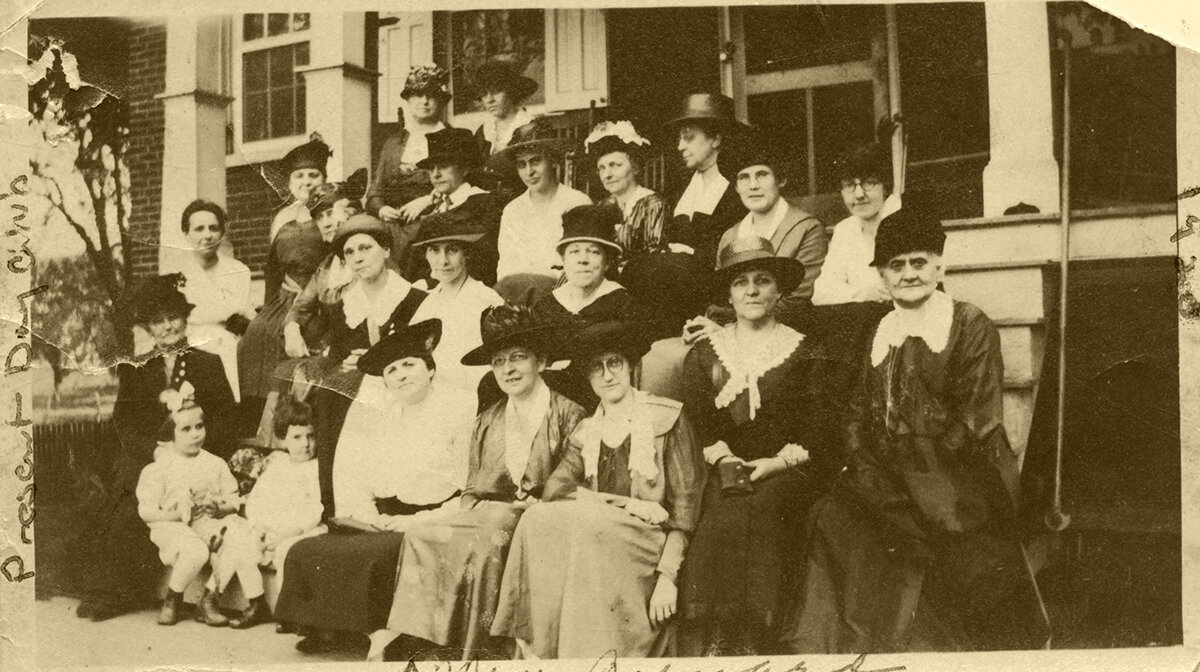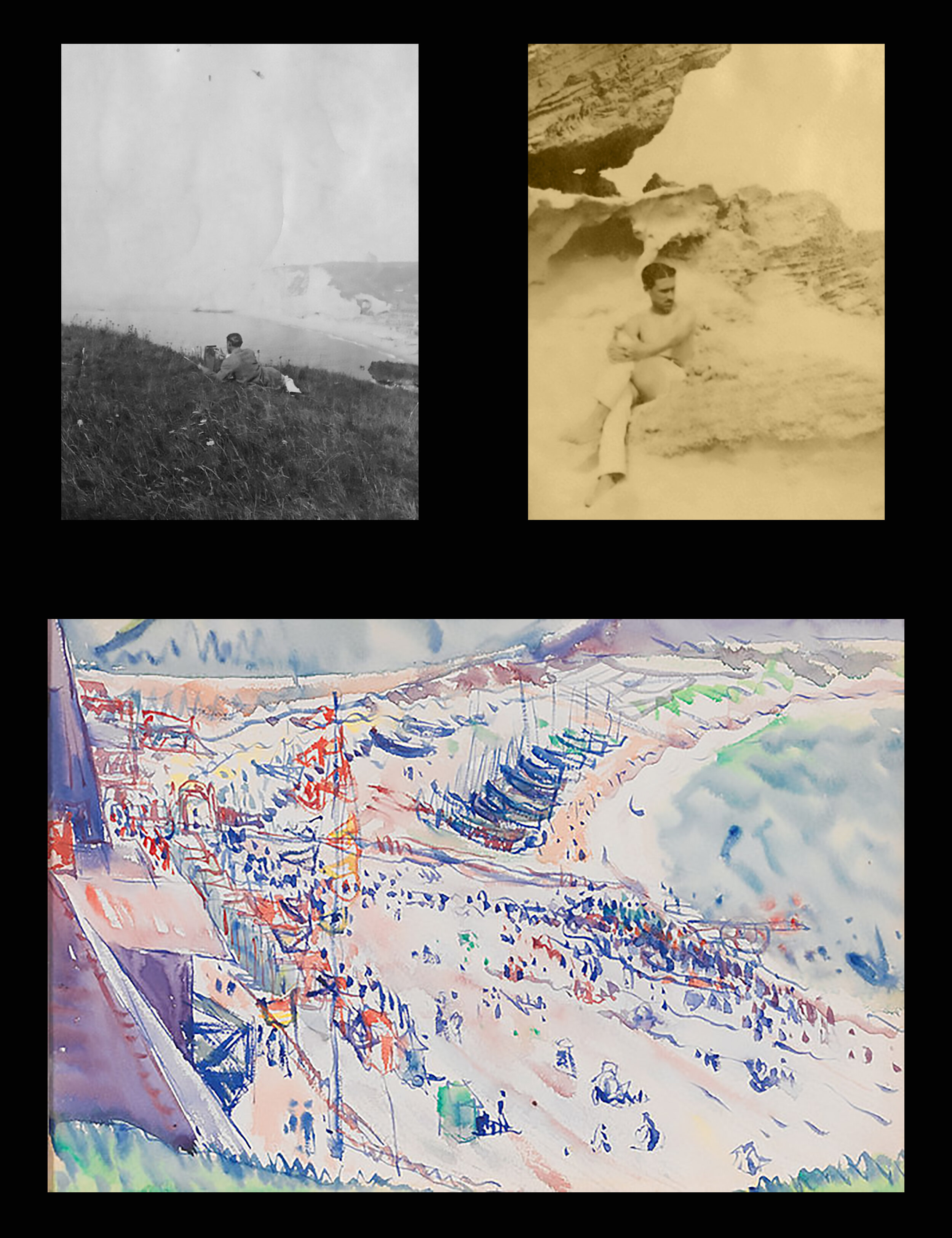Stop 8: Bowman Watch Factory
Bowman WAtch Factory | 147 North Duke Street
Some of the charming architectural details Charles might have pointed out to Henry are the observatory, the clock, and the etched glass lanterns of the Ezra F. Bowman Sons Watch Company. In 1879, the E.F. Bowman Watch Company is founded in Lancaster, Pennsylvania with the assistance of W.H. Todd, whom designed the first model, a 16s fully-jeweled 3/4-nickel-plate movement. In 1882, Ezra decides to devote his time to the wholesale jewelry trade and sells his watchmaking operation to J.P. Stevens Watch Co. of Atlanta, Georgia, but continues to sell and repair watches.
But we didn’t stop because of Ezra. Ezra’s daughter, Miss Martha M. Bowman, was a well known painter and Demuth’s first art teacher. You can see her in this picture of the Present Day Club, courtesy of the Lancaster County Historical Society Archives, taken in 1920.


“She born in Lancaster. She graduated from the New York School of Industrial Art for Women, where she won the Maddock Scholarship two years in succession. She also studied at the Pennsylvania Academy of Fine Arts under William M Chase, and was a pupil of Cecelia Beaux. She studied Pedagogy at Columbia University.
“Miss Bowman taught drawing and design in Mrs. Blackwood’s school and also in the Stevens High School. She taught private pupils at her studio, 150 East Chestnut Street, among them a young Charles Demuth.
“Portraiture is more interesting to Miss Bowman than any other type of painting: and she is keenly appreciative of the atmosphere which surrounds each portrait. When she studies another artist’s picture, she puts herself in the place of the artist and tries to recreate the thoughts and mood which influenced the painter. The first portrait which she analyzed was one painted by Isabel Branson Cartwright, and at the conclusion of the lecture one lady came forward with outstretched hands. “Allow me to congratulate you, Miss Bowman”, she said. “You could not have described my mental process better if you had been inside me while I was painting that portrait. I am Mrs. Cartwright.”
“She has written some clever poems and a number of short stories for children. She delighted in entertaining little folks and was an active member of the Story Tellers League.
“Miss Bowman spent some time in Paris and her work shows the influence of French method and technique. She was a member of the Fellowship of the Pennsylvania Academy of Fine Arts, the American Federation of Art, and the American Artists’ Professional League.”64
Charles is often described as “frail” or “sickly”, but as a young teenager, Charles would walk the 2 ½ blocks from his home to the Bowman House at 150 E. Chestnut Street on the other end of this block carrying his sketchpad, books, and box of paints under one arm and using his cane with the other. In Provincetown, he would hike 2-3 miles from town out to the dunes on the Atlantic Coast with his watercolor easel, paper, and paints. Helen Henderson, who attended PAFA at the same time as Demuth, wrote:
“I wish that I could make you see him as he was in those earliest days of his appearance as an art student in Philadelphia. Slender and of medium height, he walked with a limp which he never allowed to hamper his activities, He walked, danced, swam, did all those athletic things as well or better than the other boys.”65
Too often we remember Charles as he was after the onset of Diabetes, when he truly was in a weakened state. But even then, Demuth pushed on. Charles Daniel recalled:
“In 1920, Demuth went home and wrote me about his sickness. A sad thing. Nevertheless, he sent in some pictures, and came to see the show. He looked terrible. Four or five months later he came into the gallery and he was almost fat. That is what insulin had done for him. He was courageous—never a murmer about his condition. He would roll up his sleeve at the gallery, nonchalantly take a shot of insulin, and be off.” 66 I am sure Charles would prefer to be remembered for everything he succeeded in doing, rather than focusing on his so-called frailty. He had the heart of a lion.
64 Martha M. Bowman, Know Your Local Artists Scrapbook. Lancaster Historical Society, Lancaster, PA. 1936. MG-434, Box 083.
65 Farnham: Life, Psychology, & Works, Vol. 1. P. 37
66 Farnham: Life, Psychology & Works, Vol. 3. P.992


